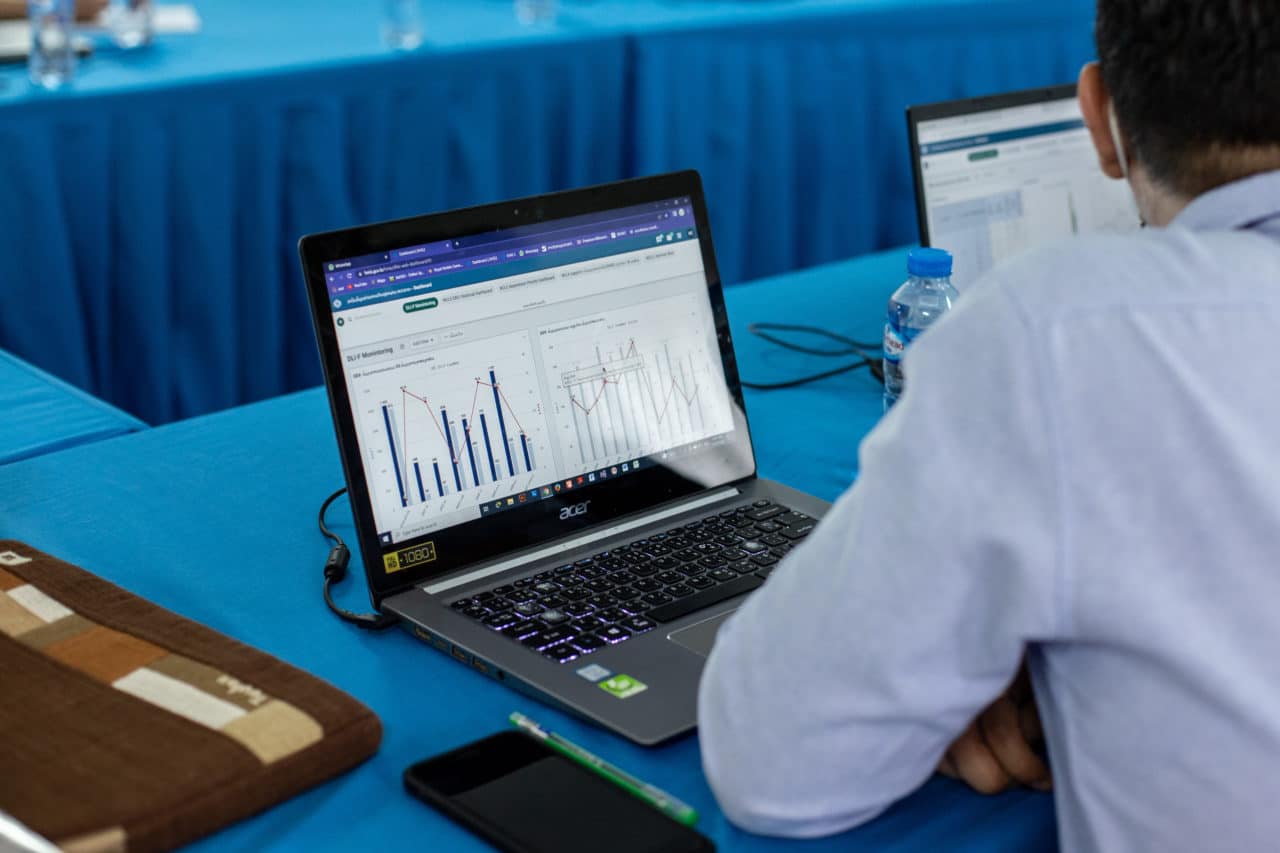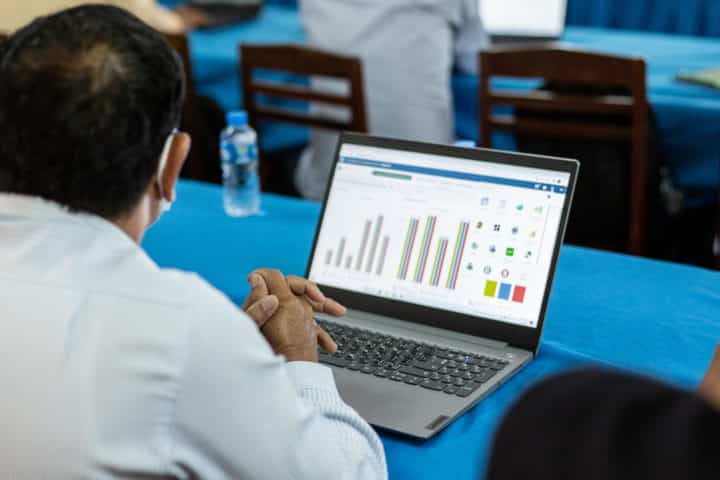
Improving surveillance of infectious diseases in Laos with DHIS2
After switching to DHIS2, health authorities in Laos improved reporting rates of notifiable diseases from 68% to more than 80%, and can identify, investigate, and respond to notifications in a matter of days, stopping potential disease outbreaks in their tracks
Strong disease surveillance systems that collect timely case-based data on notifiable diseases are a core component of early warning and response mechanisms in national public health programs. These systems help ensure that disease outbreaks are rapidly identified, so that appropriate investigation and response activities can be conducted to help stop outbreaks of potentially deadly diseases in their tracks. In Laos, an evaluation carried out in 2017 identified weaknesses in the Ministry of Health’s existing disease surveillance system, Lao-EWARN, including limited analytical and reporting functionality that hampered its performance and capacity to identify and contain outbreak-prone diseases, putting the population of Laos at higher risk.
To address these gaps, the Ministry of Health (MoH) of Laos adopted a new case-based disease surveillance system based on DHIS2. This system, which was rolled out to national scale from 2019 to 2022, is fully integrated with the national Health Management Information System (HMIS), and allows for the capture of more granular case-based surveillance data that fully integrates with other routine health statistics. During the first 12 months of the new system, more than 166,000 disease cases were reported – with diarrheal disease, dengue, and respiratory infections being the most common – and average reporting rates increased from 68% to 82%.
In one specific example from June 2023, a cluster of several diphtheria cases was reported through routine weekly surveillance reports in DHIS2, immediately triggering follow up analysis, case investigation, sample collection, and testing. Positive test results led to the deployment of a rapid response team for contact tracing, a targeted immunization campaign, and communication on preventative measures to affected communities. Using DHIS2, data from all of these activities could be recorded and shared in one platform, helping health authorities to identify and contain the potential outbreak in less than three weeks.
“Thanks to the new disease surveillance and response module in the national HMIS, the Ministry of Health is now able to more effectively monitor notifiable diseases and to take informed decisions to investigate and contain outbreaks, leading to better health security for the people of Lao PDR.”
– Dr. Bouaphanh Khamphaphongphane, Deputy Director, National Center for Laboratory and Epidemiology, Lao Ministry of Health
User-focused design, testing and training leads to local buy-in and high impact
Following the assessment of the Lao-EWARN system, the Ministry of Health commenced a process to develop and deploy a replacement disease surveillance system based on DHIS2. This was carried out under the leadership of the National Center for Laboratory and Epidemiology (NCLE) within the Department for Communicable Disease Control (DCDC). The process began with comprehensive internal assessments and external consultations with key technical partners, which led to the development of a prototype of the indicator-based surveillance module in 2019. With technical support from Population Services International (PSI), the World Health Organization country office, and HISP Vietnam, the DHIS2 program and SOPs were tested, piloted in Vientiane Capital province in early 2020, and adjusted based on pilot feedback.
A central Training of Trainers workshop was held in mid-2020, followed by provincial-level training workshops for epidemiology staff from all district health offices and hospital staff in charge of reporting. The system was then deployed in all 148 districts and all public and army hospitals in the country. The Covid-19 pandemic delayed the full transition from Lao-EWARN to DHIS2, but by February 2022 the MoH formally declared DHIS2 the sole reporting tool for notifiable disease surveillance.

Case-based data from health centers are now routinely reported for all 18 notifiable diseases under the responsibility of NCLE. A set of dynamic, interactive DHIS2 dashboards are used for each group of diseases (vaccine-preventable, food- and water-borne, dengue fever, respiratory infections, zoonotic diseases) and for data quality monitoring. These dashboards contain clear visuals and summary tables, taking advantage of the latest advanced DHIS2 analytics functions. As a result, end users from central, provincial, district-level, and facility-level epidemiology units now all have easy access to tailored comprehensive disease surveillance information. These are also used by the national Public Health Emergency Operations Center (PHEOC) and provincial EOC units in combination with supply chain and logistics dashboards.
During the first 12 months following the national-scale adoption of DHIS2 for disease surveillance (March 2022–February 2023), more than 166,000 cases were reported, the majority relating to diarrheal disease, dengue, and respiratory infections. Average reporting rates increased from 68% in the first quarter of 2022 to 82% in the third quarter of 2023. Regular supportive supervision and data quality assessments have shown gradual improvements in overall quality over this time period.
The switch to a case-based disease surveillance module in DHIS2 made it possible to streamline reporting by health facilities and has led to several efficiency gains: improved data quality, automated reporting, and – most importantly – timely availability of critical surveillance data for communicable disease control units responsible for detecting and containing outbreaks. Epidemiology staff now spend more time reviewing and proactively using surveillance data, rather than entering records and compiling reports.
“Compiling disease surveillance trends and monthly reporting used to take me more than a week in Lao-EWARN, but now thanks to DHIS2 it is very easy and only takes about half an hour. With data capture now happening at district and hospital level, the provincial health office has more time to monitor reporting and surveillance activities and to conduct outbreak investigation and response”
– Mr. Somechit Bounthavong, Epidemiology staff at Phongsaly Provincial Health Office (PHO)
Improving outbreak detection and response time from several weeks to a few days
Improved timeliness of reporting and greater ability to analyze and use data among local health authorities has enabled the rapid detection of several outbreaks, such as pertussis, diphtheria, dengue, and typhoid fever. Where it used to often take several weeks for notifiable disease case reports to reach provincial and central health authorities, notification now often takes only 24 to 48 hours, thus enabling a swifter response to prevent and contain these outbreaks. In addition, the fine-grained surveillance data, based on line-lists of case reports for a range of diseases and symptoms, have allowed for more granular spatio-temporal analysis of epidemics such as dengue: since all cases are geo-referenced to village level, health authorities are now able to easily identify clusters of transmission using the DHIS2 Maps app.
One real-world example of how the DHIS2 system could help health teams react more effectively came in June 2023. In the last week of June, a cluster of several diphtheria cases was reported from the Khammouane provincial hospital. The weekly EPI surveillance summaries and email alerts generated by DHIS2 rapidly informed NCLE, who immediately analyzed case data through the DHIS2 line listing. Key details such as patient profiles and affected villages were shared with the Provincial Health Office and the PHEOC, using a dedicated WhatsApp group. The provincial epidemiology unit verified case reports with the hospital and conducted the initial investigation. They instructed the hospital to promptly collect samples for confirmatory testing, while suspected patients were quarantined. Within a few days, the provincial laboratory returned positive results, with final confirmation done by the national laboratory at NCLE.
Response operations were promptly carried out. The Rapid Response Team from the PHO, including epidemiology staff working in collaboration with Health Education and Vaccination units, along with the District Health Office, identified close contacts and individuals exhibiting similar symptoms, who were offered immediate testing. A targeted vaccination campaign was conducted, while additional protective measures that could help curb the spread of the virus, such as regular handwashing and mask-wearing, were emphasized through communications campaigns in the affected communities. Several more diphtheria cases were detected through these efforts, bringing the total to 11 patients. By the end of the second week of July – less than three full weeks after the first cases were reported – the outbreak had been contained, with no further cases reported.

Lessons learned and next steps
The team that supported this implementation learned several valuable lessons during the process of transitioning from Lao-EWARN to DHIS2, which can also be applied to similar health information system strengthening activities in other settings. Their six most important lessons are:
- Adopt flexible, user-centered tools and technology design practices that keep the end-user in mind and allow for flexibility so that the tool can evolve over time.
- Cascade training for optimal deployment and to promote local capacity by using a “training of trainers” approach and local champions to rapidly train and support hundreds or thousands of health workers with minimal central support.
- Provide users with comprehensive, multi-channel support mechanisms such as technical manuals, video tutorials, and WhatsApp troubleshooting groups that are available in the local language and accessible from a support dashboard in DHIS2.
- Keep a close eye on data quality and system use by tracking reporting rates by province or district to identify gaps in consistency or completeness and facilitate targeted coaching and supportive supervision.
- Collaboration, coordination & communication with the Ministry of Health and key partners is essential to avoid “reinventing the wheel” and leverage the skills and expertise of each partner.
- Promote local ownership for sustainability by getting commitment from senior leadership to drive the deployment process and buy-in from key stakeholders at a national level, and rally provincial leadership and identify “champions” to drive the process locally.
The strategy of the Lao MoH to strive for a comprehensive, unified HMIS, supported by a strong technical team within the Ministry, has contributed to ensuring local ownership and long-term sustainability. It also helps ensure that the country avoids ending up with a scattered ecosystem of many disconnected health information systems that remain dependent on external technical and financial support.
The transition from Lao-EWARN to DHIS2 is already resulting in better, more timely, and more relevant disease surveillance data. Further efforts are required to increase data quality and data use, much of which will depend on streamlined reporting and response protocols. Throughout the process, the team has noted that technology development is the easy part: building lasting capacity and ensuring local ownership, along with adequate change management strategies, are equally – if not more – important than the digital solutions.
As per the recommendations of the Lao National Action Plan for Health Security (2022-25), disease surveillance will be further strengthened by improving the quality of indicator- and event-based surveillance systems and by establishing multi-source surveillance practices, with a greater focus on community engagement for event detection and reporting. In the longer term, the laboratory information system is expected to be integrated with the case-based syndromic surveillance system, thus enabling the combination in DHIS2 of facility-level reporting with information collected on sample testing in the country’s laboratories, which will further increase system efficiency and contribute to additional reductions in outbreak response time.
This article is based on a learning brief by Bram Piot and colleagues of PSI Laos, originally published in January 2023. You can also read more about their work in Laos and share your comments and questions on the DHIS2 Community of Practice.


